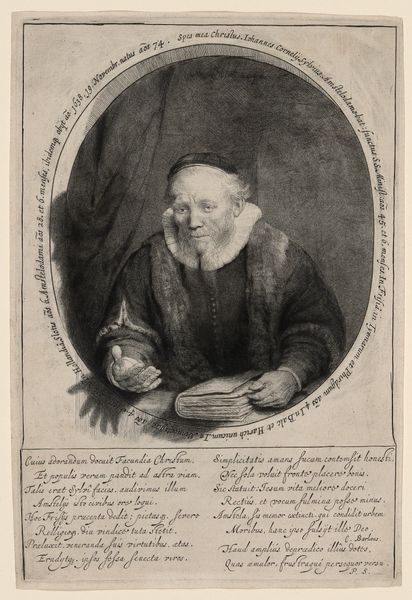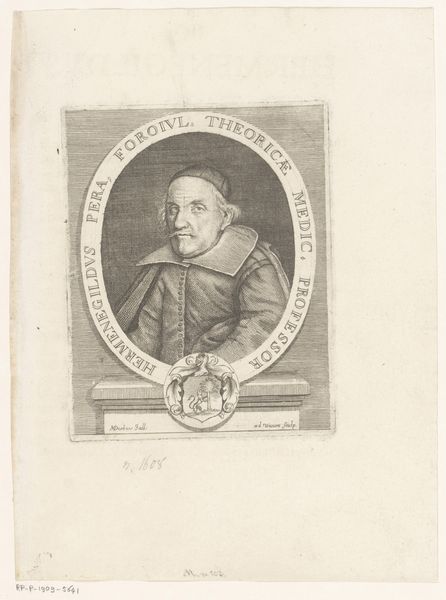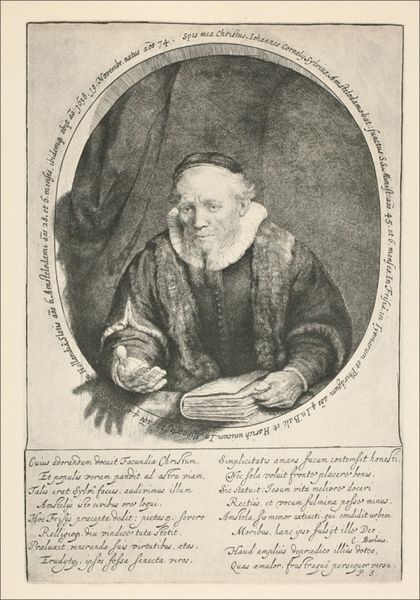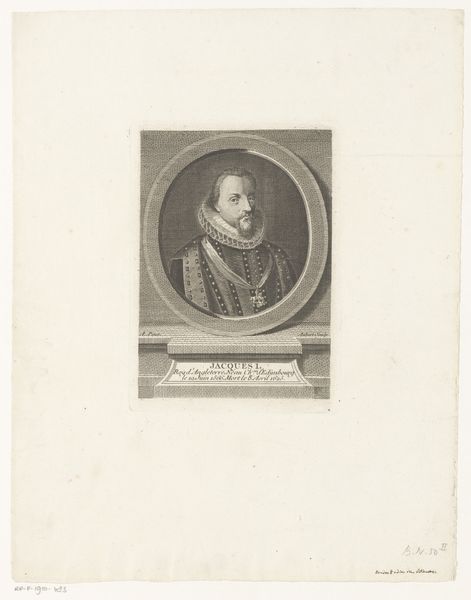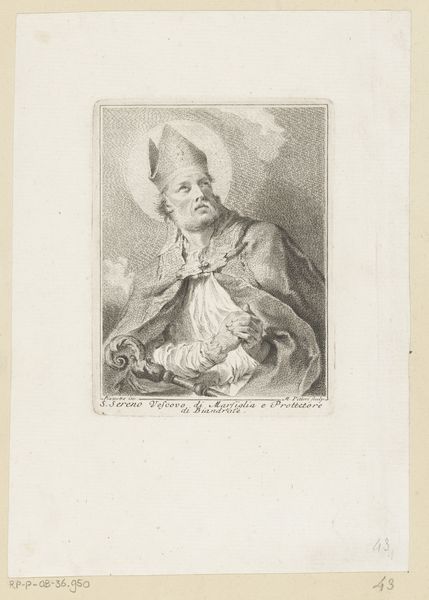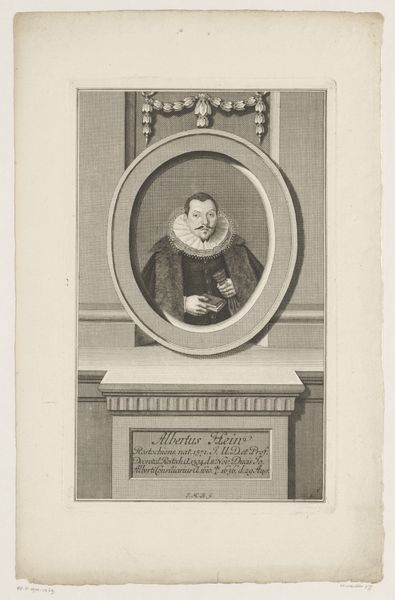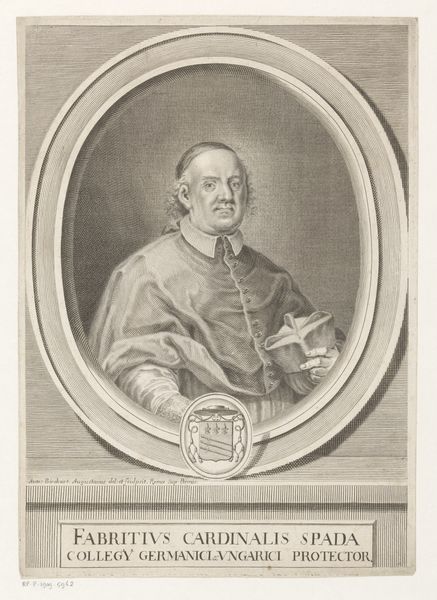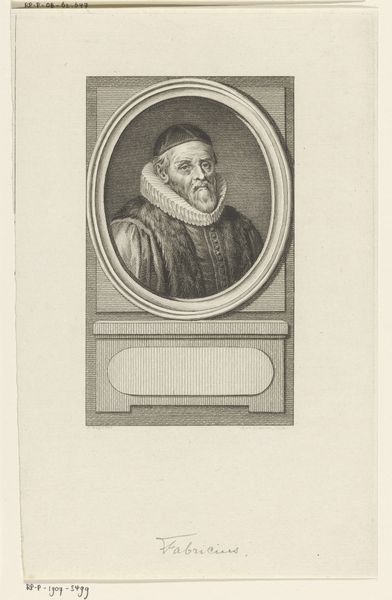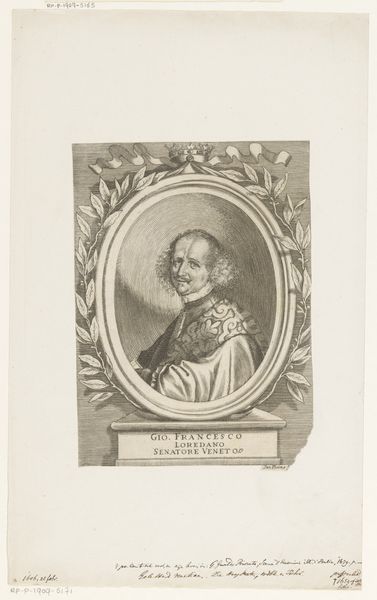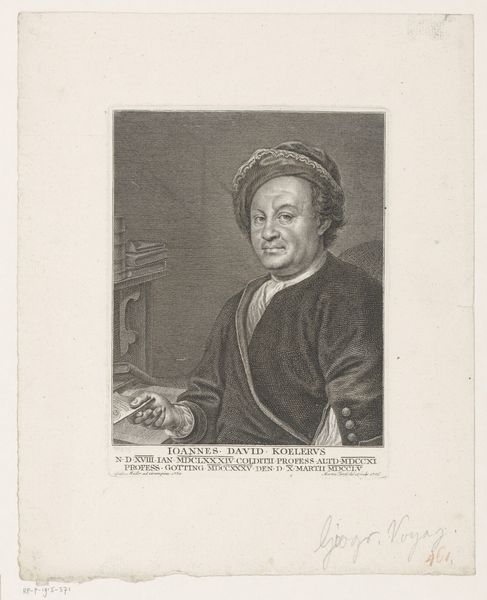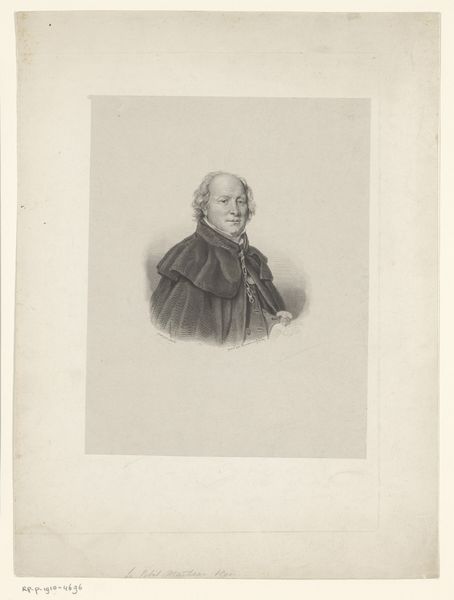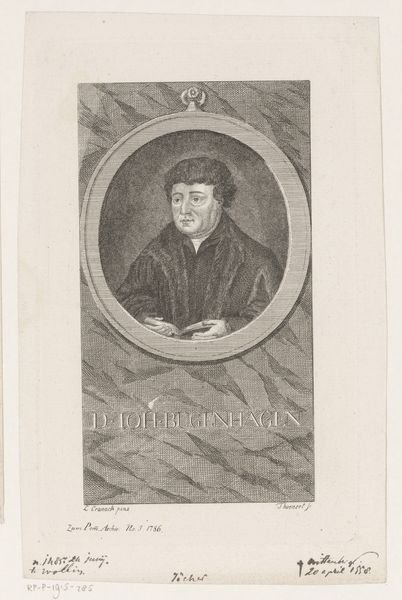
print, engraving
#
portrait
# print
#
old engraving style
#
caricature
#
portrait reference
#
portrait drawing
#
history-painting
#
engraving
Dimensions: height 161 mm, width 106 mm
Copyright: Rijks Museum: Open Domain
Curator: This engraving is a portrait of Jan Cornelis Sylvius, made between 1710 and 1766 by Thomas Worlidge. It’s currently held in the collection of the Rijksmuseum. Editor: Ah, he looks like he’s about to tell me I’m late on my taxes or something. Seriously though, there’s a melancholic weight to his expression. That circular frame within the print makes it seem as though we are peeking in on a very private, somber moment. Curator: It’s a wonderful example of portraiture conventions during this period, and, looking closer, the composition itself can be seen as framing Sylvius within certain historical and religious contexts. Note the book – likely a religious text, referencing his status and scholarly work – as well as the details of his clothing indicating his stature within society. Editor: True, it feels posed, constructed. But the hands, right? They’re so… human. One cradling the book, the other almost reaching out. It's a really lovely tension between the official image and something more intimate. You almost expect him to start fidgeting. Curator: Exactly. The artist uses the conventions of portraiture but subverts them through this injection of implied action. I think we can see this engraving participating in a wider discourse about identity and representation during the period. Consider, who has access to being memorialized? How do they want to be remembered, and who is doing the remembering for them? Editor: I think you are right. The soft greys also add this lovely nostalgic filter, almost like a faded memory. It's quiet, thought-provoking. Makes you wonder what Jan Cornelis Sylvius was actually like. I’m getting a feeling this engraving is not so much about status as much it tries to grapple with mortality itself. Curator: I completely agree. Thinking about Worlidge’s intentions through that lens encourages us to challenge art historical assumptions and open avenues for inclusive, multifaceted stories. Editor: It's funny how a little peek through a circular frame can lead to such big questions! A nice moment of connection with someone long gone, though.
Comments
No comments
Be the first to comment and join the conversation on the ultimate creative platform.

